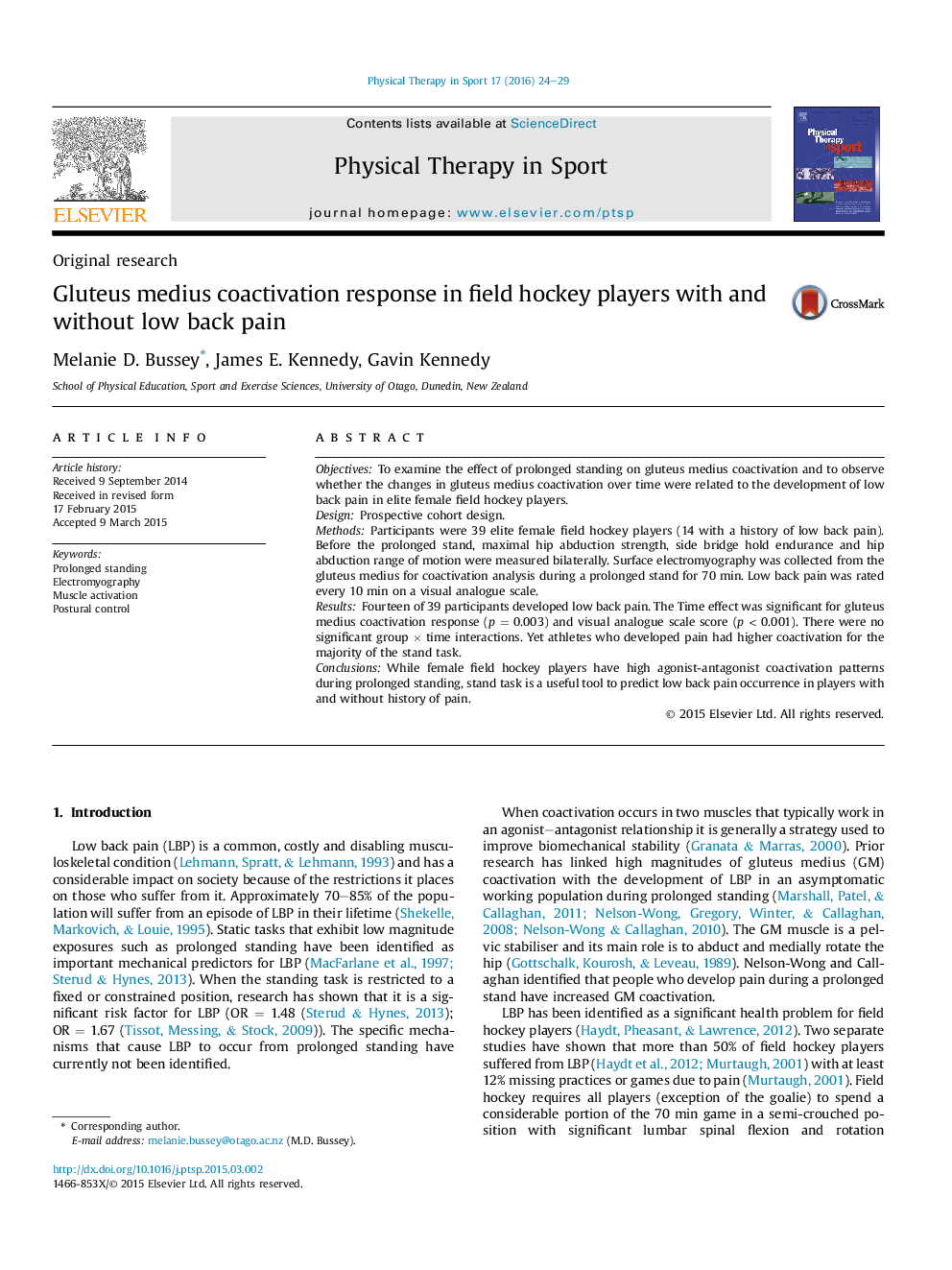| Article ID | Journal | Published Year | Pages | File Type |
|---|---|---|---|---|
| 2709889 | Physical Therapy in Sport | 2016 | 6 Pages |
•Gluteus coactivation during prolonged standing may be a useful predictor of LBP in female hockey players.•Female field hockey players utilise aberrant gluteus medius muscle activation with greater coactivation than the general public.•A previous history of LBP is a risk factor for female field hockey players developing LBP while prolonged standing.
ObjectivesTo examine the effect of prolonged standing on gluteus medius coactivation and to observe whether the changes in gluteus medius coactivation over time were related to the development of low back pain in elite female field hockey players.DesignProspective cohort design.MethodsParticipants were 39 elite female field hockey players (14 with a history of low back pain). Before the prolonged stand, maximal hip abduction strength, side bridge hold endurance and hip abduction range of motion were measured bilaterally. Surface electromyography was collected from the gluteus medius for coactivation analysis during a prolonged stand for 70 min. Low back pain was rated every 10 min on a visual analogue scale.ResultsFourteen of 39 participants developed low back pain. The Time effect was significant for gluteus medius coactivation response (p = 0.003) and visual analogue scale score (p < 0.001). There were no significant group × time interactions. Yet athletes who developed pain had higher coactivation for the majority of the stand task.ConclusionsWhile female field hockey players have high agonist-antagonist coactivation patterns during prolonged standing, stand task is a useful tool to predict low back pain occurrence in players with and without history of pain.
